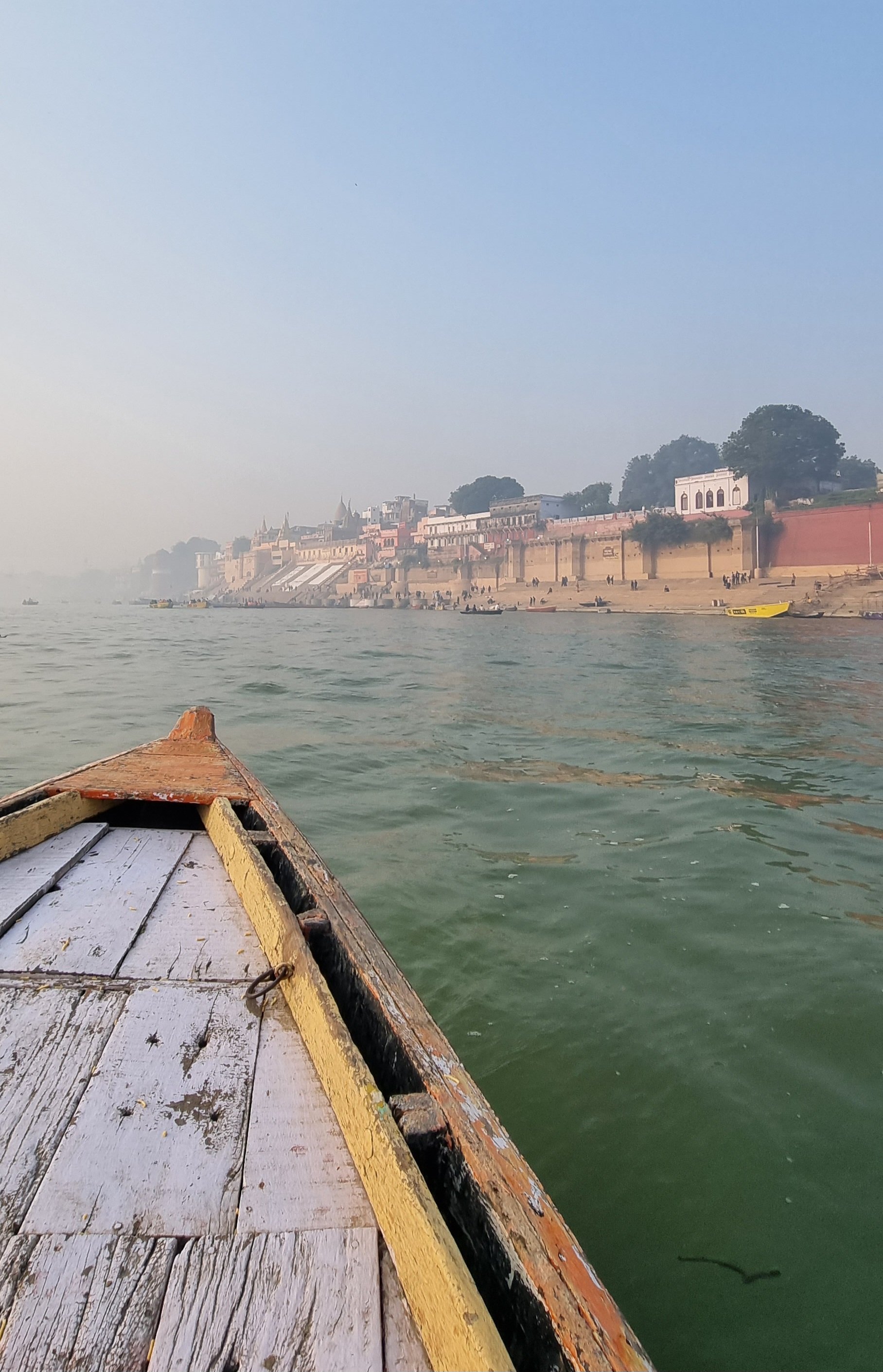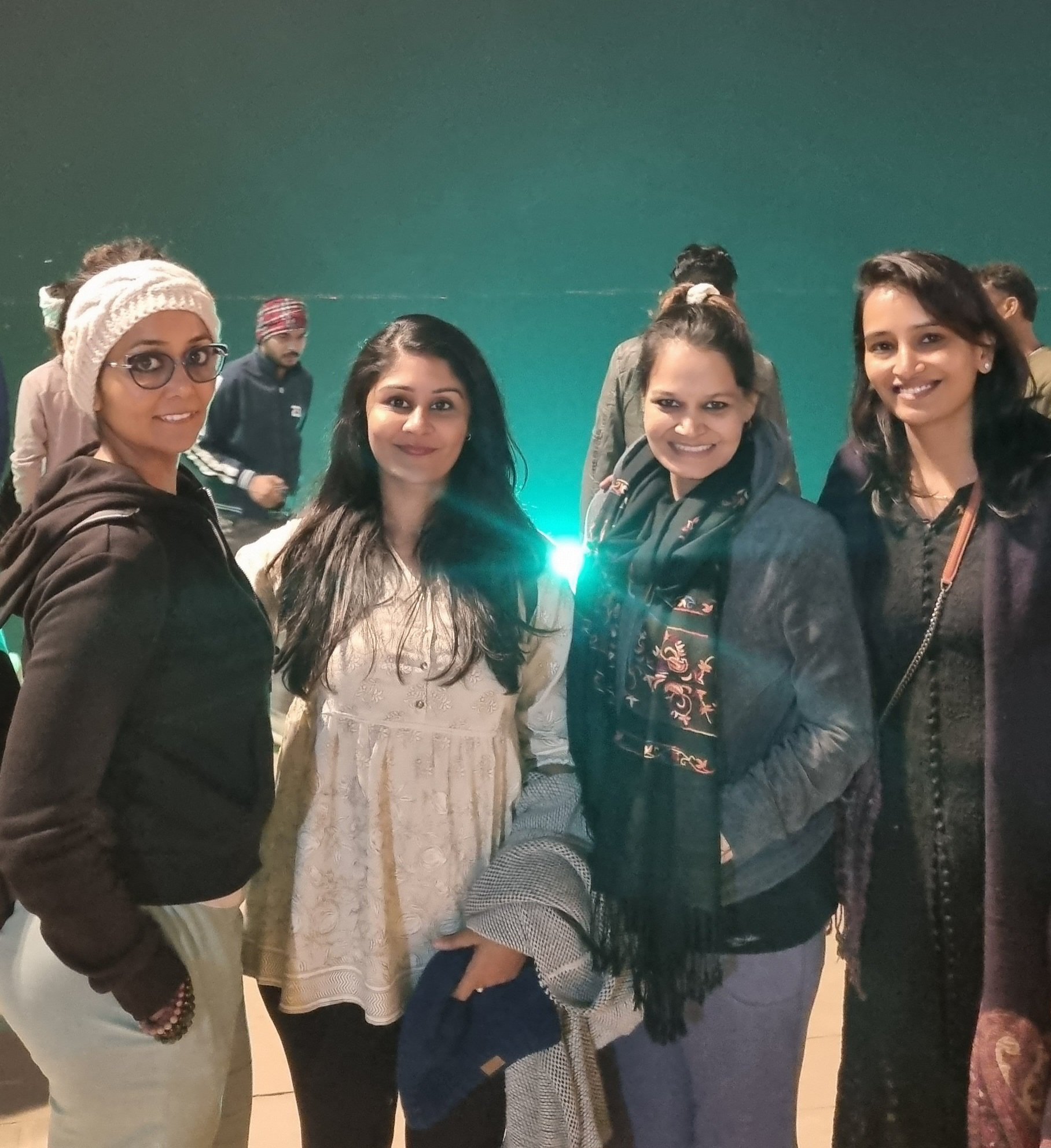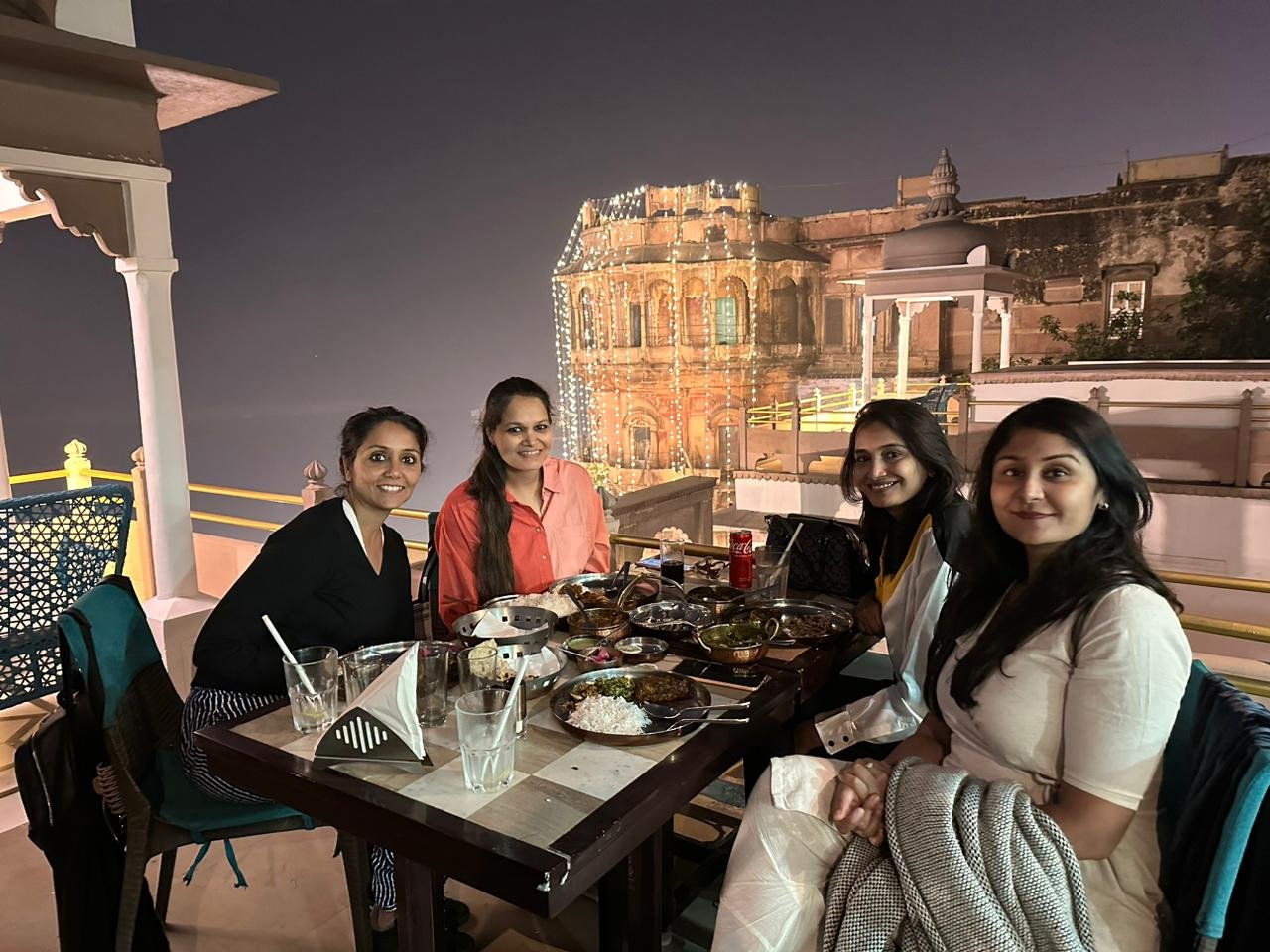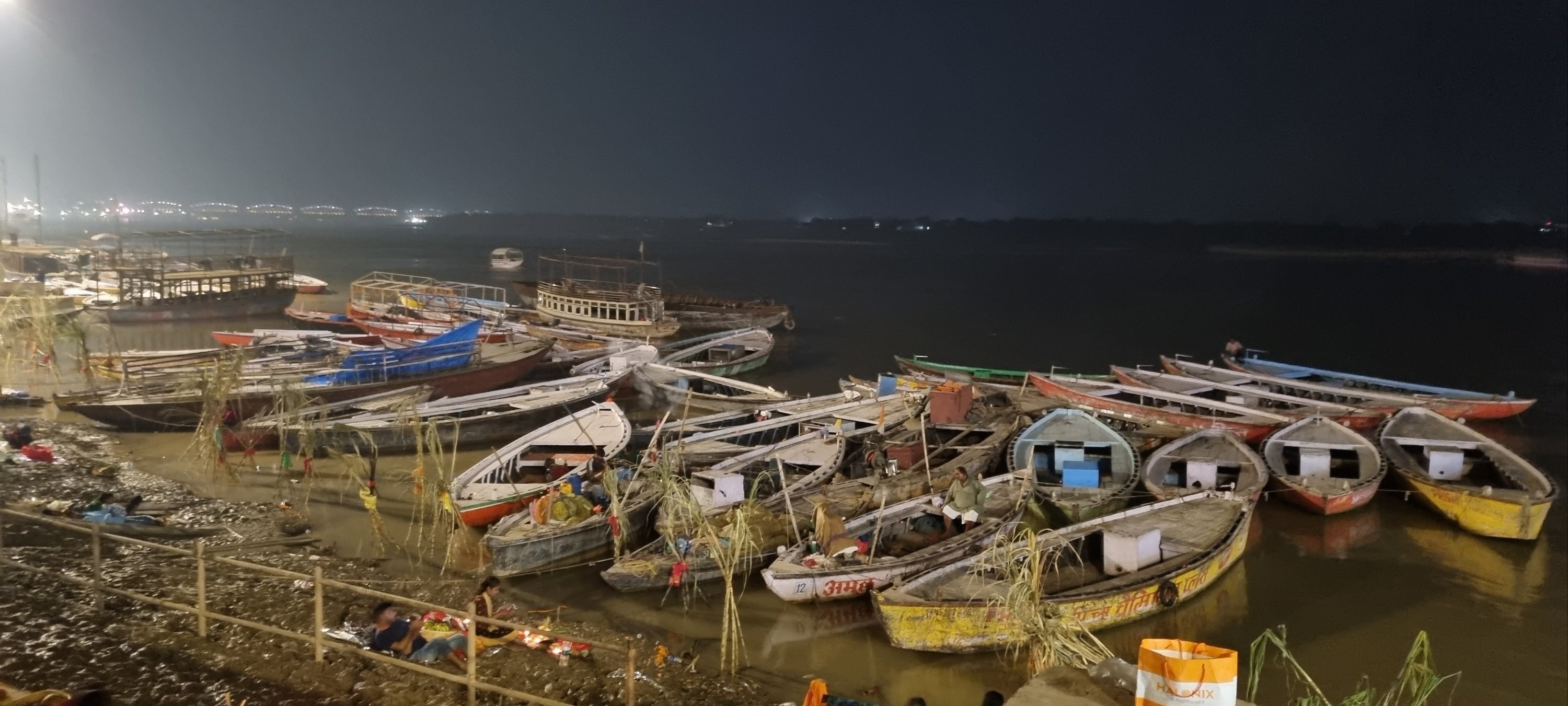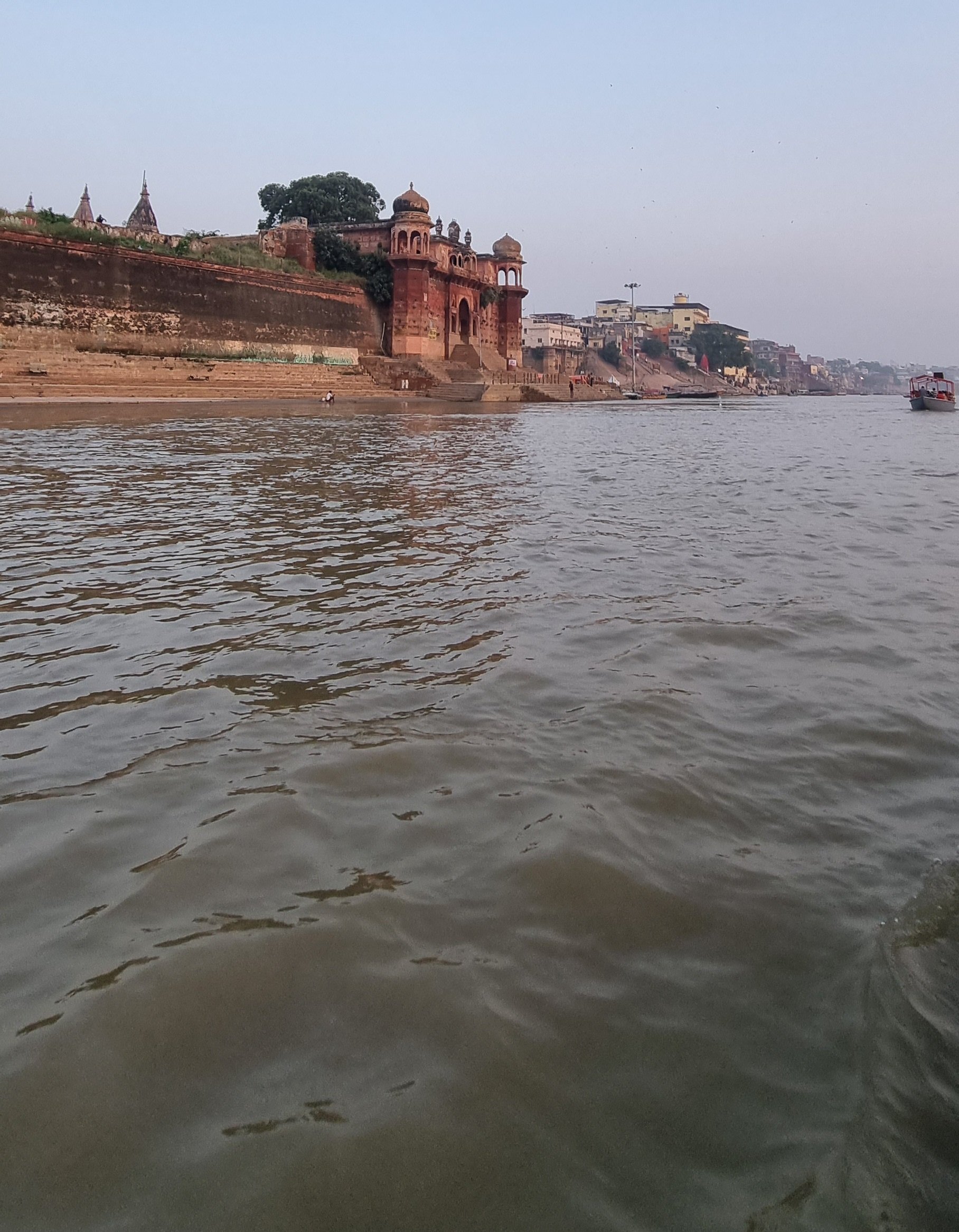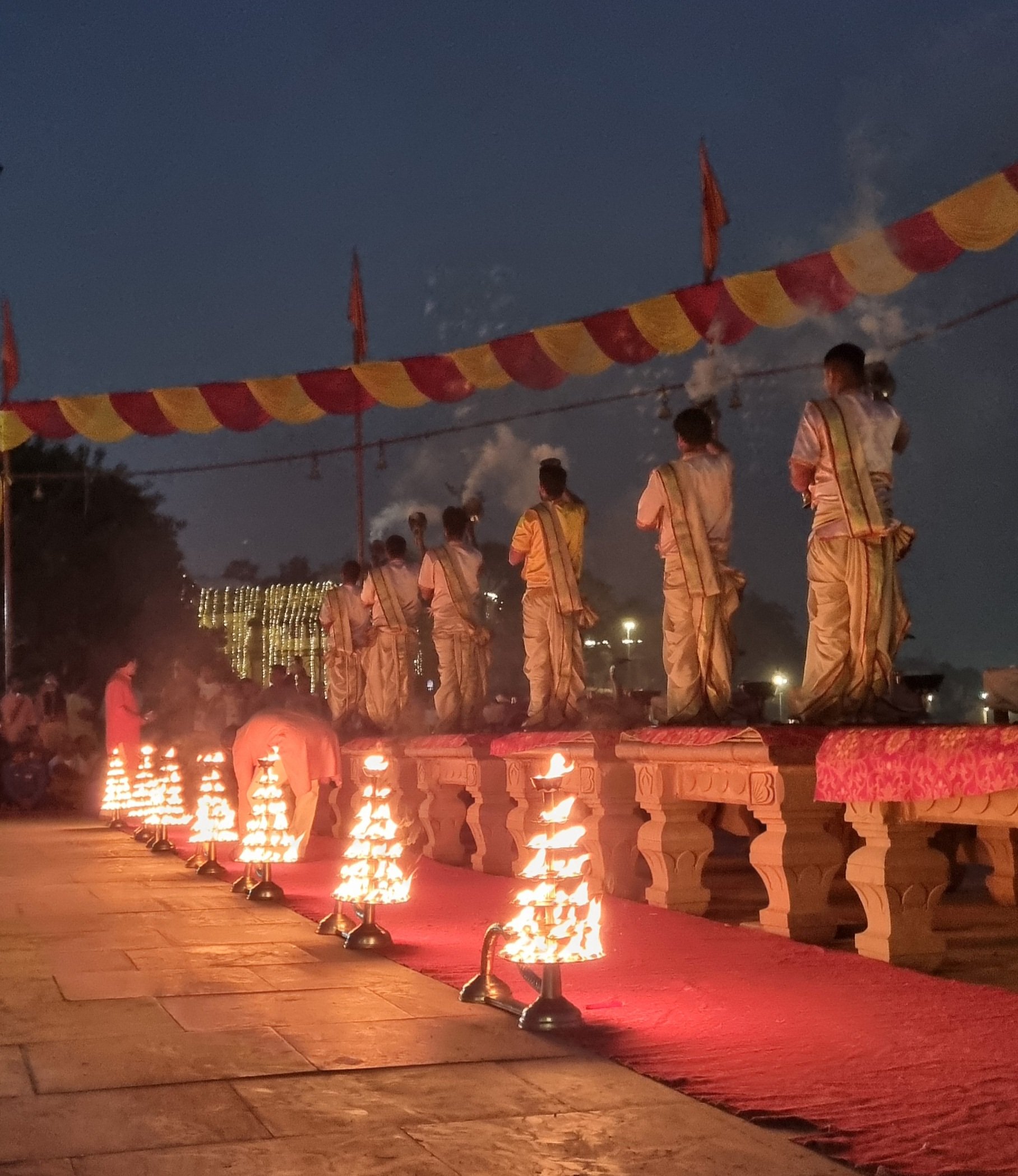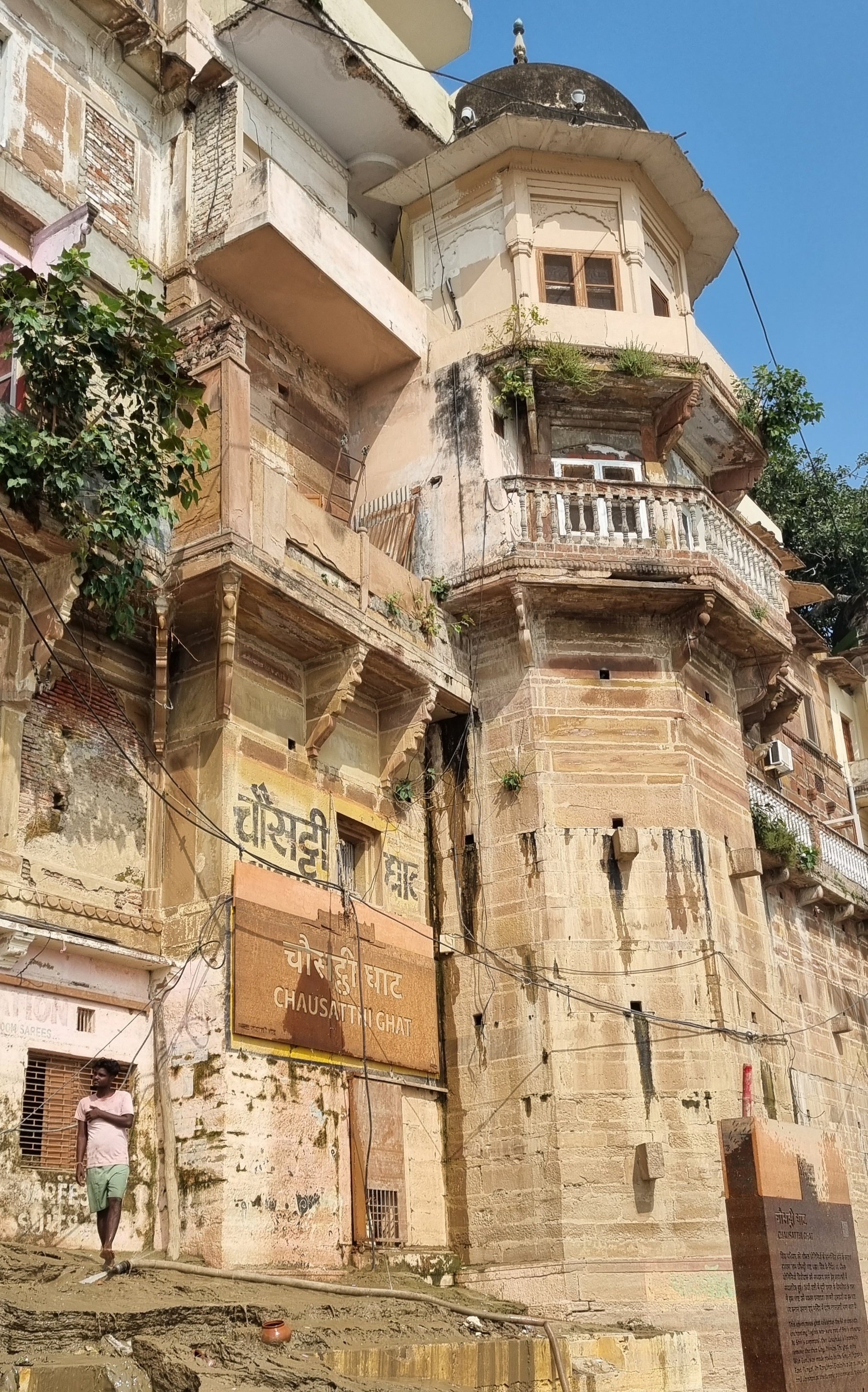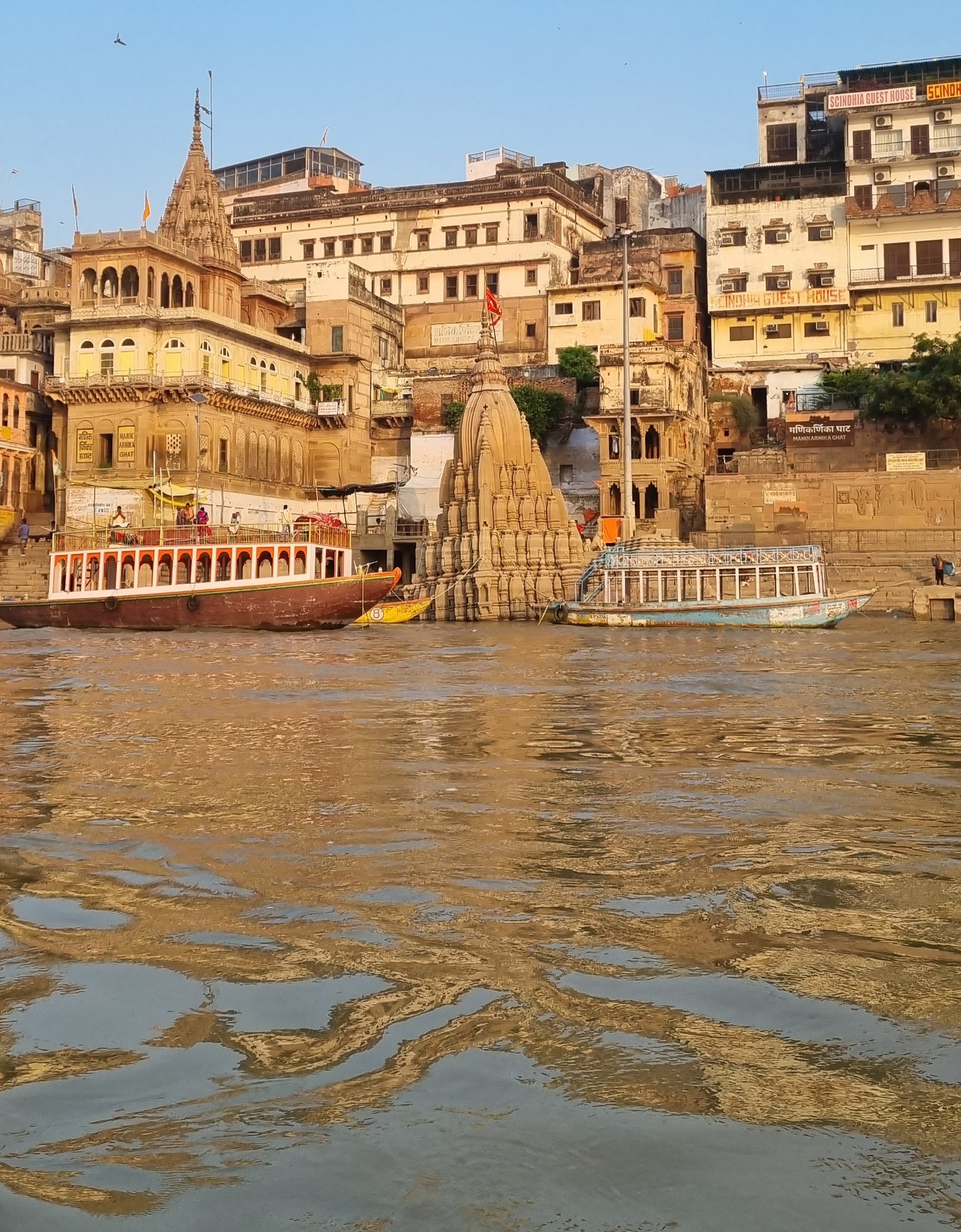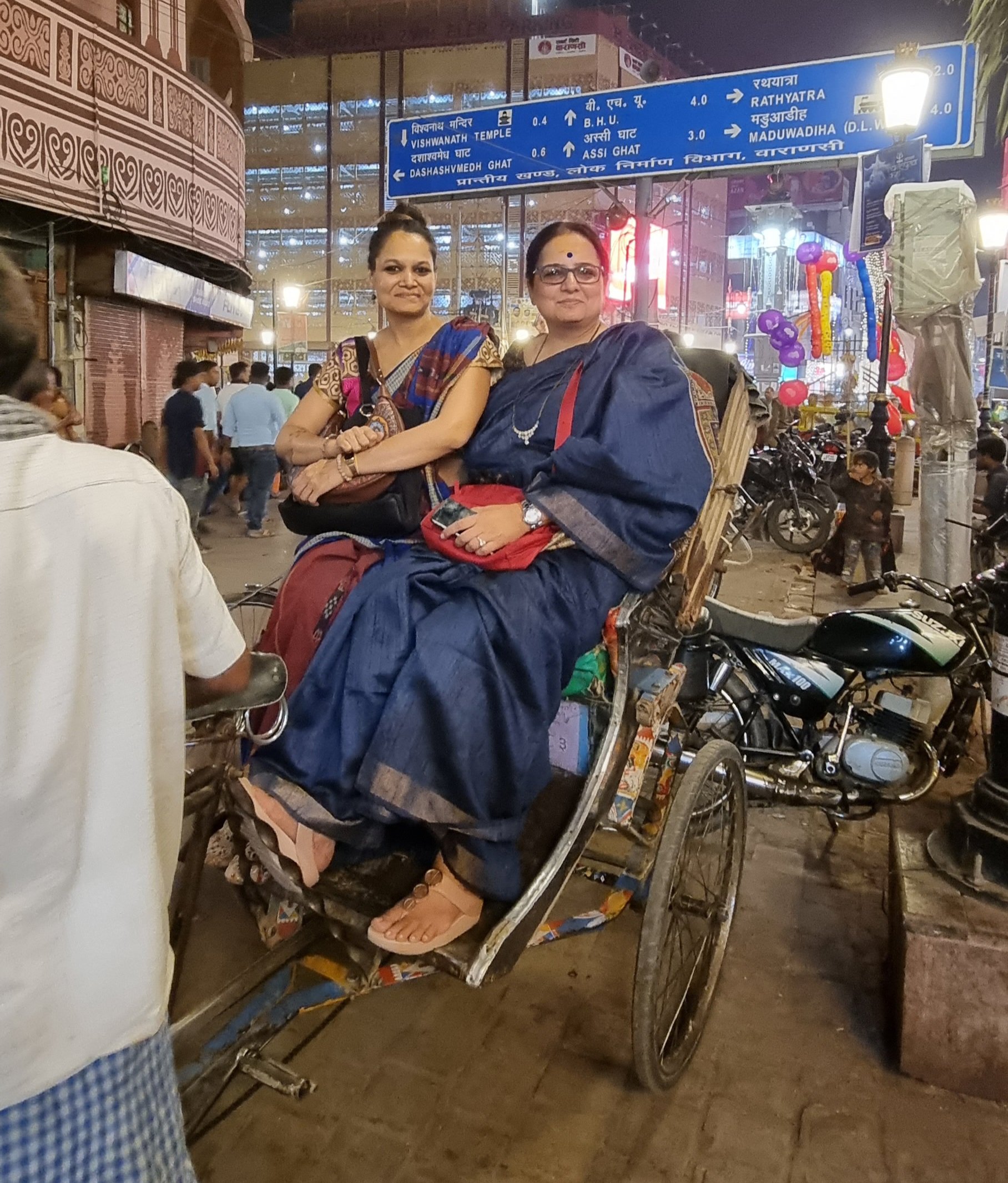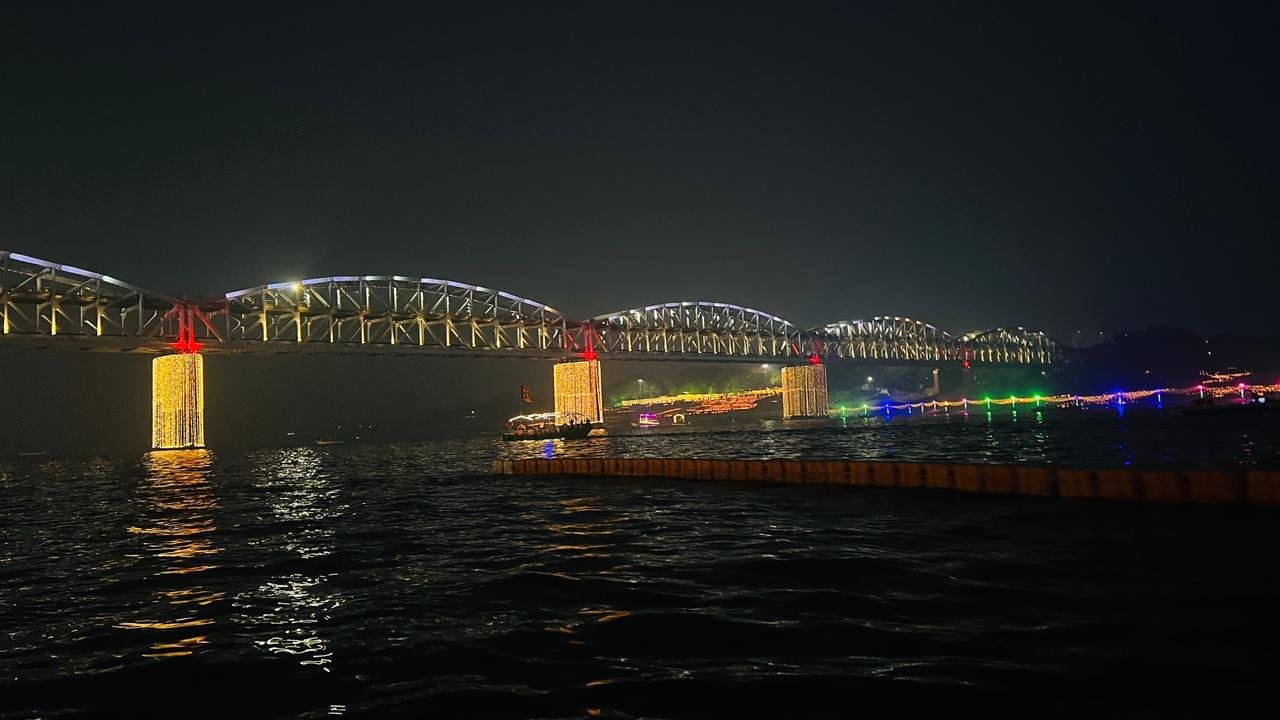
The bridges across the Ganges are also decked up for Dev Deepawali.
I wrote quite a few blogs about my trip to Varanasi last year. I mention sailing the Ganges to look at the ghats, the Yogini temple, the magnificent Ganga aarti etc. Last year I heard about Dev Deepawali – a local festival celebrated on a grand scale fifteen days after Diwali is celebrated across the country. At the time I remember thinking I’d love to see that, and hopefully next year.
I forgot all about that until my sister in law asked me about my plans over dinner one night. Within two days I had roped in another friend who roped in another … and soon the four of us were off to the oldest city in the world.
The Celebrations
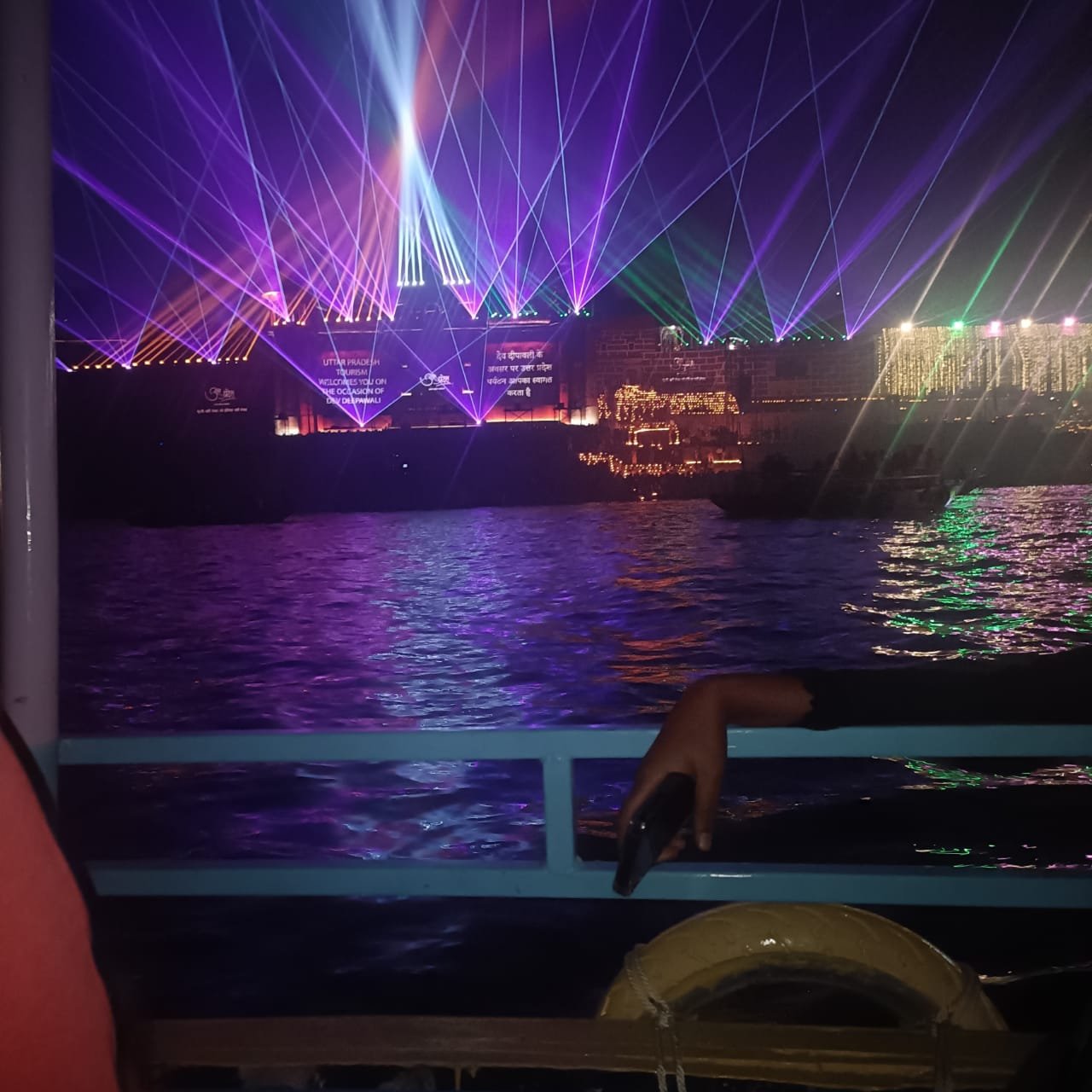
Dev Deepawali can literally be translated as the ‘Diwali of the Gods’. Although now Dev Deepawali has started gaining traction -it’s basically a local festival, celebrated only in Varanasi. Women dress up in beautiful saris, apply henna on their hands and wear the prettiest jewellery. The high point of the event is the lighting of the ghats with a million (not an exaggeration) diyas. In addition to this, there is a magnificent sound and light show depicting the story of Dev Deepawali, that you can watch. This year diplomats from 70 countries attended the celebrations.
The best way to experience Dev Deepawali is from a boat on the Ganges. The Government of UP organises special cruises on the Ganges and tickets for these are exorbitant. So exorbitant in fact that we didn’t bother checking the prices and decided to get a smaller row boat and split the cost between us. We were 10 people and we split the Rs. 20000/- between us. It’s a good idea to work out a deal with a boatman in advance because the boats sell out fast.
The Boat Ride
Once you’re on the boat you’re required to wear a lifejacket. Police petrol the waters to make sure everyone is safe and that there are no accidents. The ride is basically sailing from the first ghat to the last and observing the different decorations. The entire Ganges had a festive vibe, and it’s truly unique – you won’t see the Ganges like that any other time of the year. We spent about two hours on the boat, and there was never a dull moment. It’s worth planning a trip tp Varanasi just to experience this festival. Also, don’t miss the fireworks.
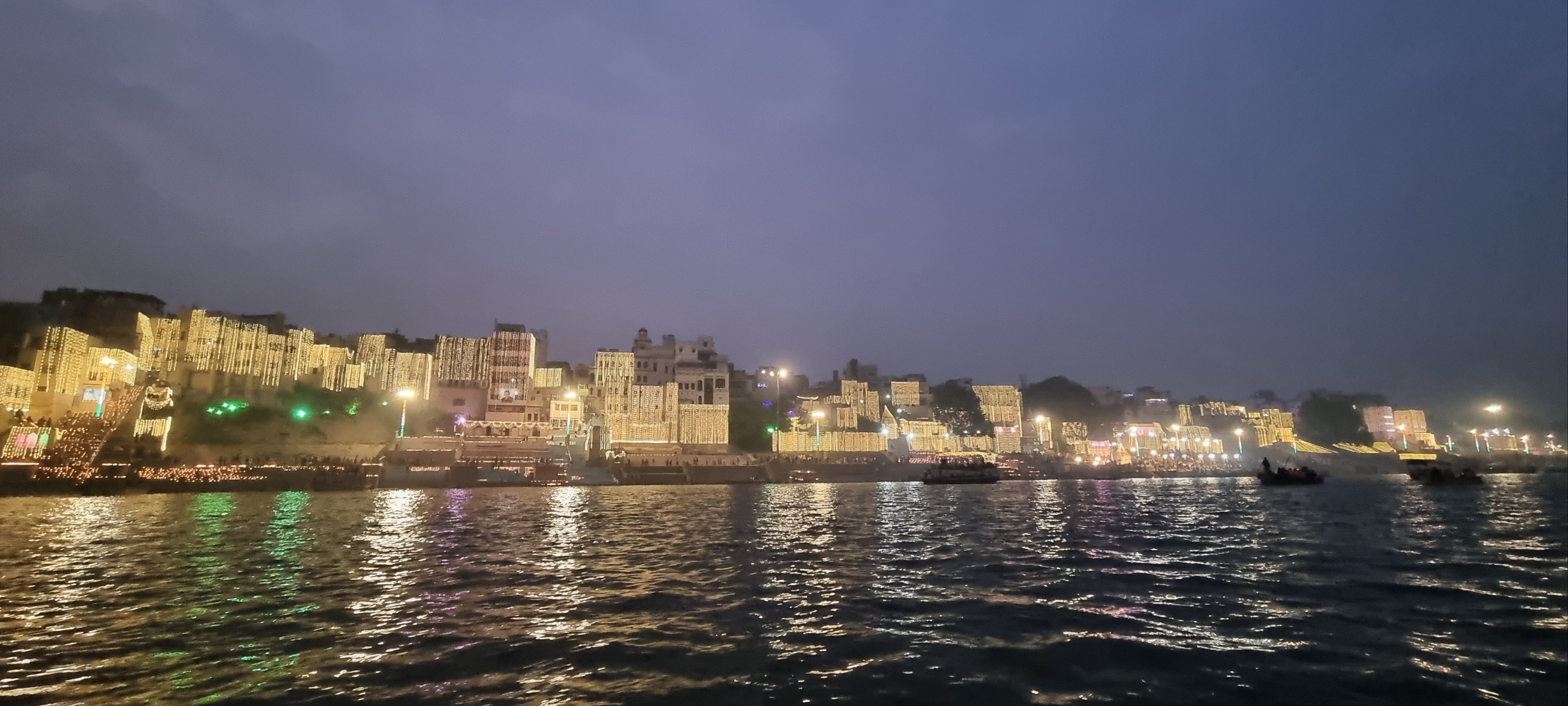
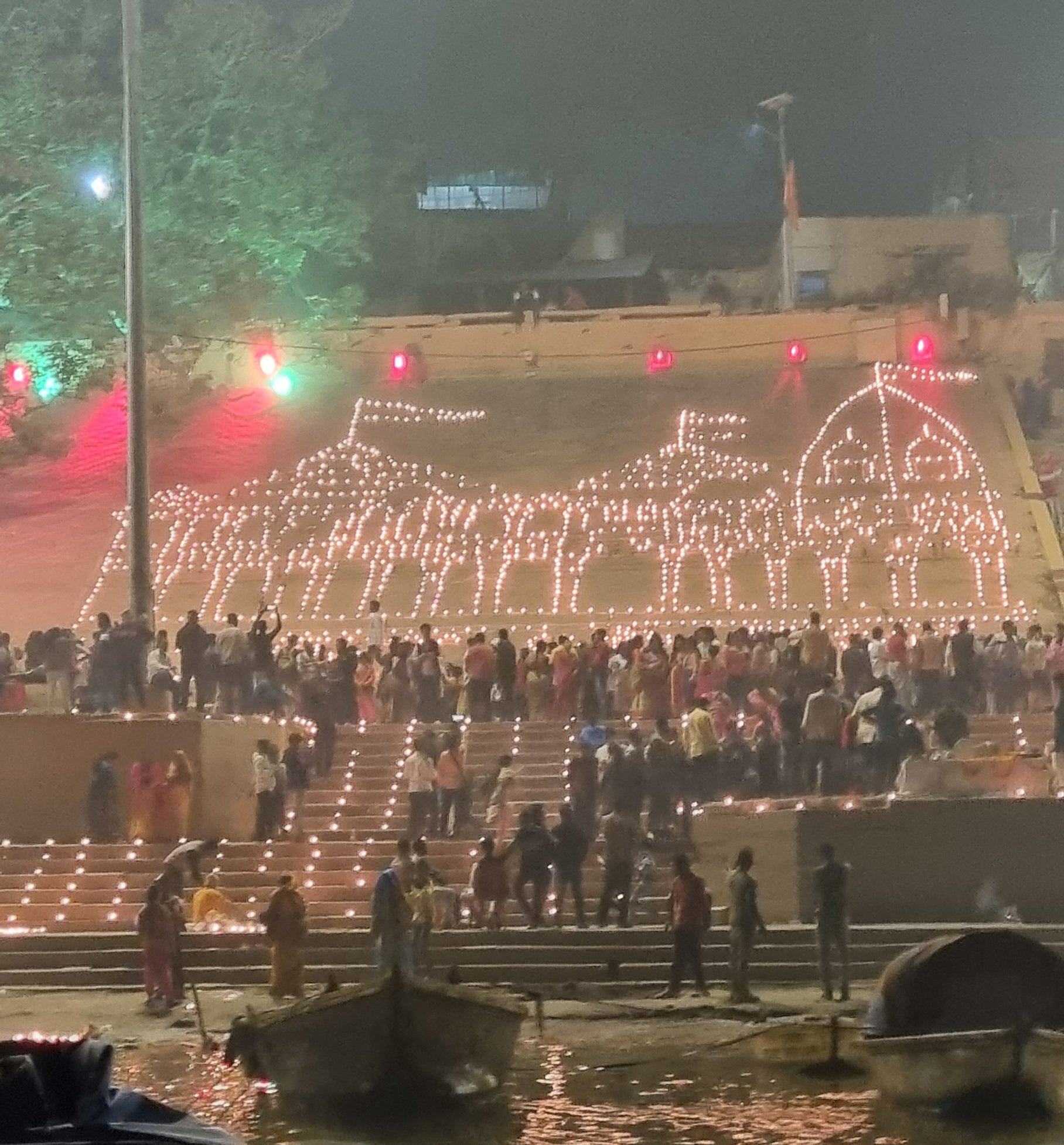
The Man Singh Observatory
Another place that had a superb sound and light show is the Man Singh Observatory on the Man Singh Ghat. The observatory was constructed by Raja Man Singh of Rajasthan and contains various types of compasses to measure the position of the planets and stars. These measurements were used to tell time and to make the lunar and solar calendars. Today these compasses make for interesting photo ops.
The Observatory was also a palace, and its first floor is now a museum cum exhibition space. There are interactive exhibits about different aspects of Varanasi, such as the art, the folk dances, the weaving and the architecture. Certainly makes for an interesting afternoon.
The main hall on the first floor (which is humongous), has been converted into the sound and light show theatre. The show is only about 15 minutes long and shows how the Ganges came to Varanasi. However, it’s only in Hindi, so difficult to understand for non-Hindi speakers. But I would still recommend it for it’s amazing picture quality.
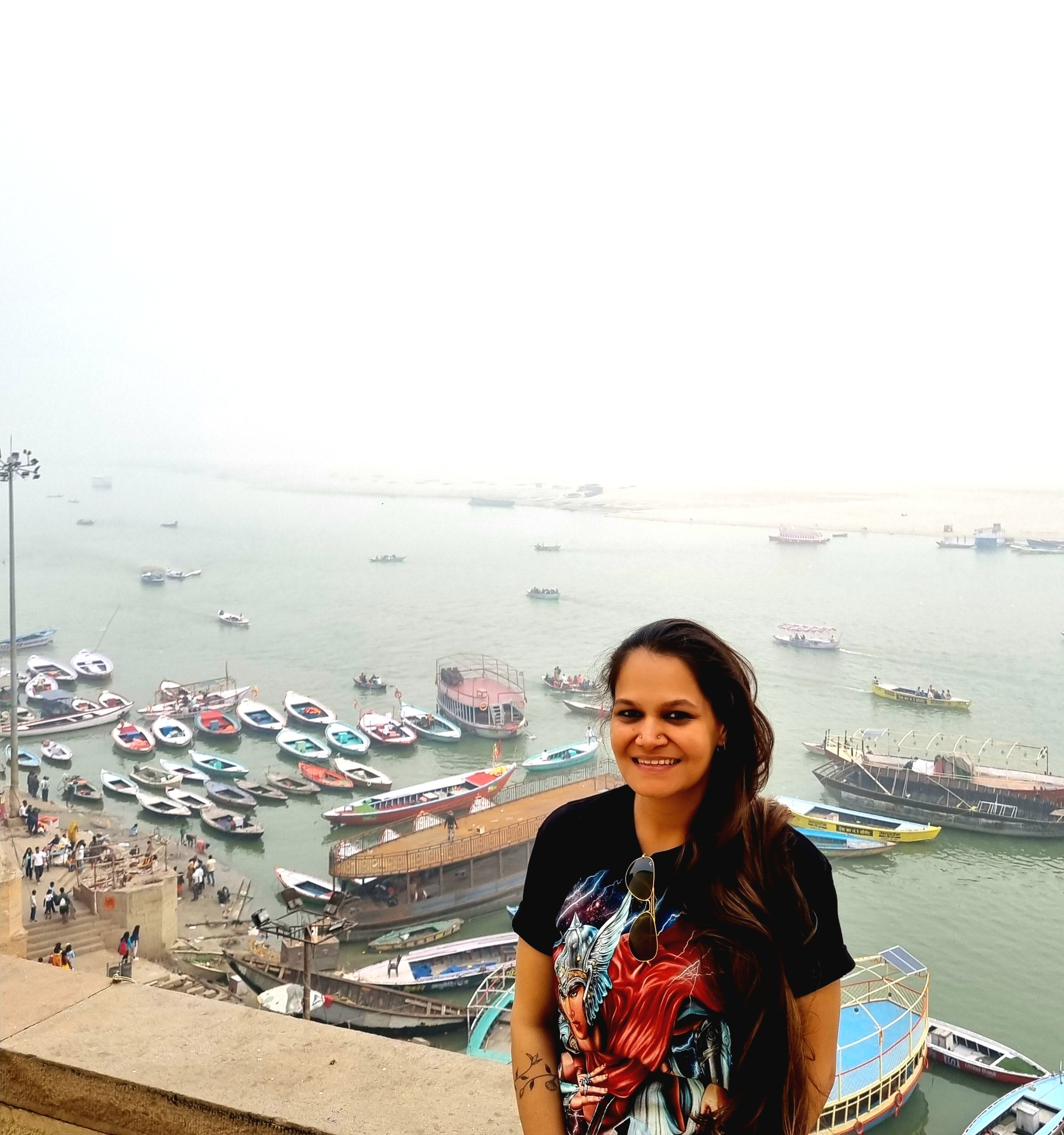
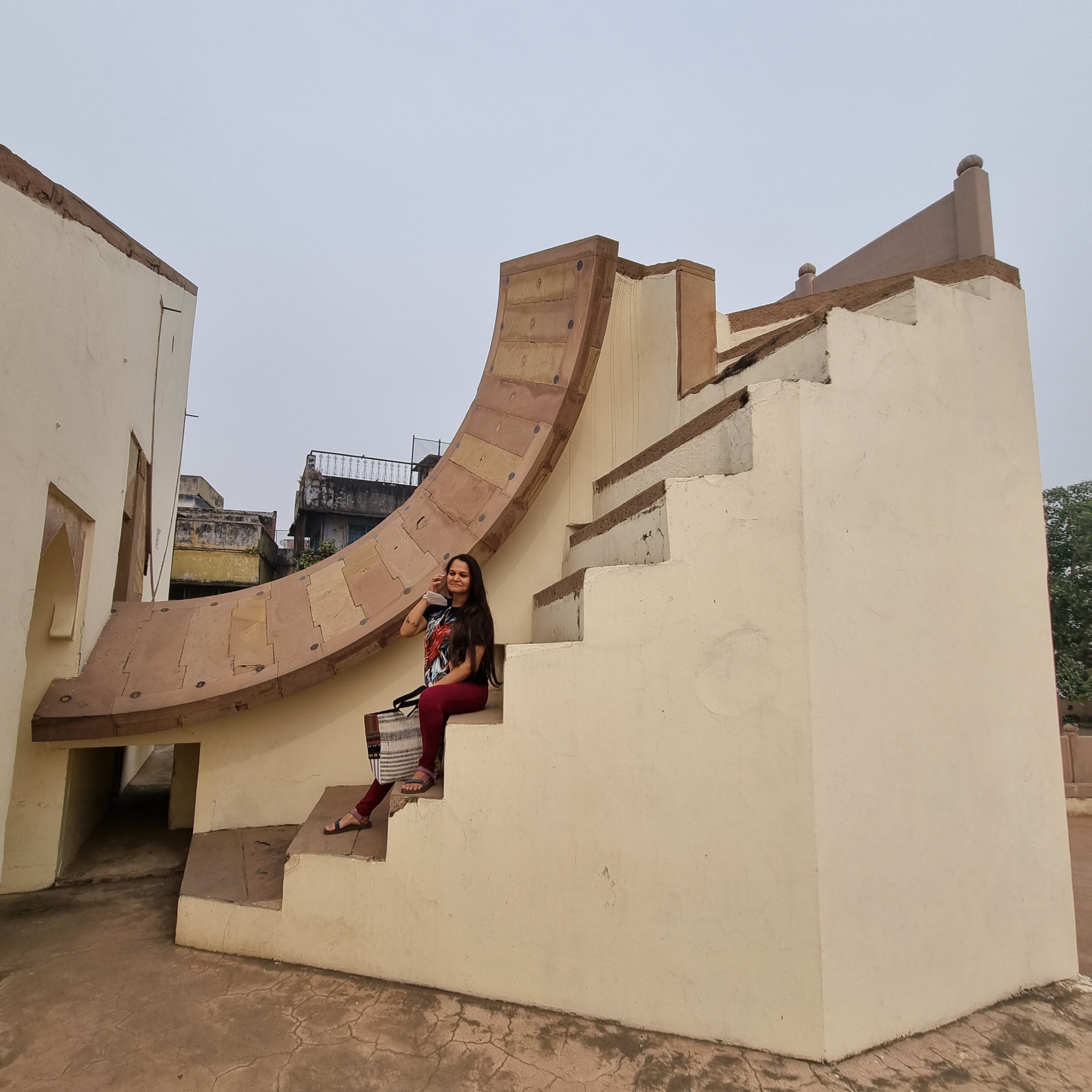
The Kashi Vishwanath Temple
No trip to Varanasi is complete without a darshan of the Kashi Vishwanath Temple. This historic (and controversial) temple draws thousands of pilgrims every year and it’s particularly crowded on the Dev Deepawali weekend. The temple is significant because it’s one of the twelve jyotirlingas, places where it is believed Shiva appeared as a long fiery pillar of light. This legend makes the jyotirlingas special, and contributes to the energy that is palpable here. There are long lines for the darshan, but a ticket can be booked online, and this might reduce the wait time. If you go early morning, you’re less likely to run into the surging crowds.
A Walking Tour
The ghats of Varanasi can be explored on foot and lately many people have started offering walking tours. This is a fabulous way to explore the ghat area, and if you find a good and knowledgeable guide, you can learn a lot about the history and legends associated with the oldest city in the world. Our tour took us through the ghats, on a boat to the Alamgiri Mosque to the bylanes of Varanasi and finally to a great lassi and malayyo stall.
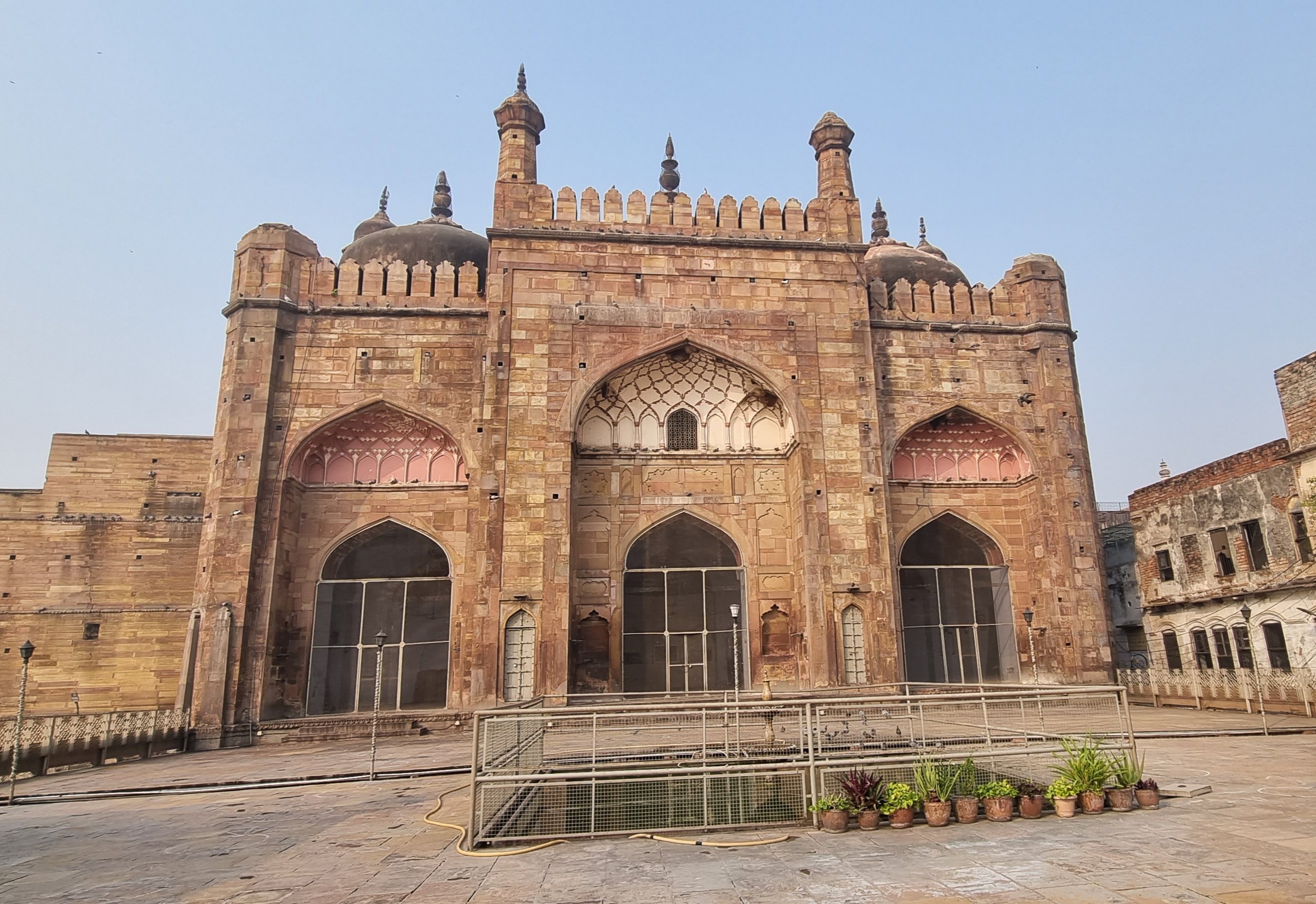
Alamgiri Mosque
